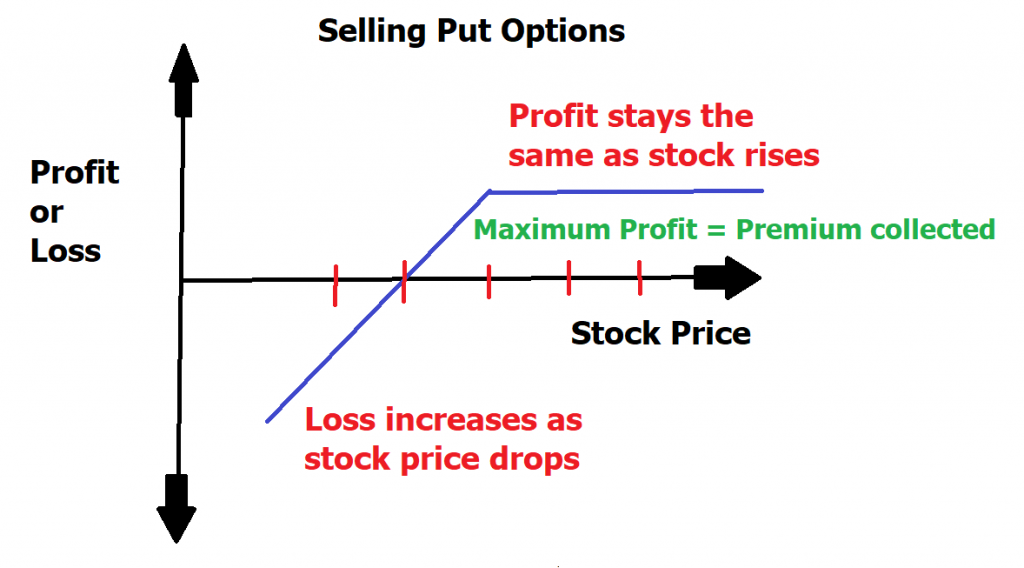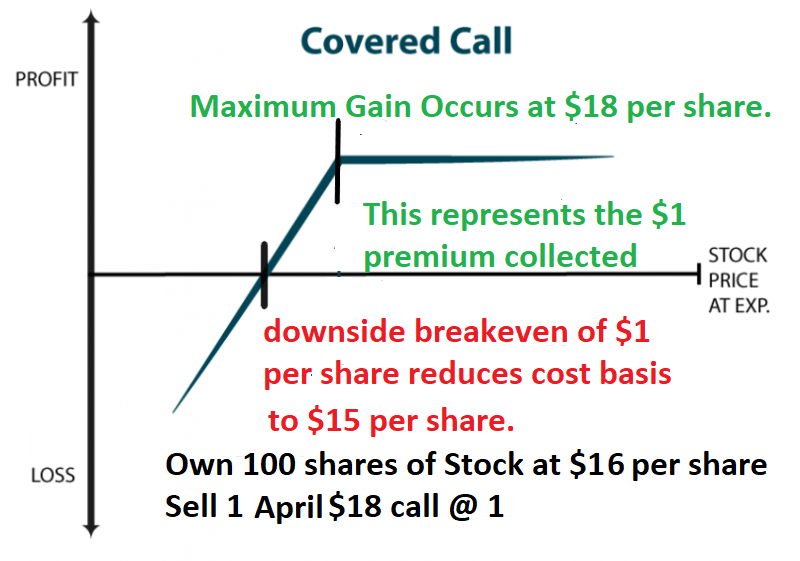One of the most fascinating and worthwhile studies you can ever engage in is learning about all the ways in which traders use options trading to give themselves an edge. Options first and foremost are risk management tools. Sophisticated traders use the options markets specifically to manage risk on every trade. The lesson most traders learn when they study options is that they can create income streams simply by agreeing to forfeit some of their potential reward. This form of trading is referred to as trading options for income and is the theme we will explore in this article.
An options contract is a contractual agreement between two parties that gives its holder the right, but not the obligation, to buy or sell a particular asset at a predetermined price and date. This type of financial instrument is typically used on the stock exchange, but can be traded in any market that involves an underlying asset. Options are popular because they provide investors with the ability to obtain potential profits with limited risk by hedging their positions; that is, they can protect themselves against losses while still having an opportunity to benefit from any increases in the value of their securities. Additionally, options give traders a greater level of control as they can lock in positions without needing to commit funds immediately compared to buying and selling stocks traditionally.
There are two types of options. They are Call Options and Put Options.
A call option gives the buyer the right but not the obligation to purchase the underlying asset at a predetermined price in exchange for a premium payment.
A put option gives the buyer the right but not the obligation to sell the underlying asset at a predetermined price between now and an expiration date.
Any time you purchase an option you have limited risk.
Any time you sell or create or sell an option you create a contractual obligation to perform and either deliver or accept delivery of the underlying asset at the agreed-upon price.
A buyer of an Option has rights. To receive those rights, they will have to pay a premium payment to the Option seller.
A seller (creator) of an Option has obligations. They will be required to offset their position or fulfill their obligation if the market works against them.
When you comprehend these concepts, you understand what allows options to be risk management tools as they are identical to insurance contracts.
An insurance contract between an insurer and the insured is a mutual agreement in which the insured party agrees to pay periodic premiums for the coverage provided by the insurer. In return, the insurer promises to pay for claims arising from damages, accidents, illness, or any other specified events covered by the policy. This protection is offered in exchange for the premium paid by either the person or business that purchases it. The two parties may agree on a wide range of coverage which could include limits of liability, exclusions from coverage as well as responsibilities. Insurance contracts obligate both parties to certain commitments and provide a secured way to protect against the risk of loss or other potential threat to their financial well-being. Most importantly, insurance is only good for a specific period of time.
Options are identical to insurance contracts in that they specify exactly what the rights and obligations of each party are. Most people are familiar with buying insurance, but they are unfamiliar with how lucrative the business of selling insurance is. When you want to create income streams from your trading, the solution is learning how to sell insurance in the options market.
Let me explain.
Warren Buffett and Berkshire Hathaway have a diverse portfolio of companies in the insurance industry. In addition to their full ownership of GEICO, they own minority stakes in reinsurance company General Reinsurance Corporation, Swiss Re AG, and Mexican insurer Grupo National Provincial Seguros. They also own approximately 32% of American International Group (AIG), with $9 billion worth of shares, making them the largest corporate shareholder.
Why is Berkshire Hathaway so heavily invested in the insurance space?
Two words. It’s highly profitable.
Another way that I look at it is through the lens of my car insurance. I’ve been driving for over 40 years. My premium payment is over $1,110 per year. I’ve never filed a claim. Every year when I pay my insurance premium, I pay the insurance company to protect me in a worst case scenario. In other words, I’m betting that I’m going to have an accident some day and I want to have the protection should that occur.
This is very similar to the idea of either selling put options or doing covered calls.
One of Warren Buffett’s favorite trading tactics is selling put options. He loves to find assets that he thinks are undervalued and agrees to own them at even lower prices. In the interim, he collects option premium today which should the asset go lower in price it also helps reduce his cost basis.
Here’s an example, let’s say you find a stock that is trading at $20 per share.
You think it is undervalued at $20 per share. But you think it is an absolute bargain at $18 per share. What Buffett does is he SELLS the $18 puts going out as far as a year to collect as much premium as possible and reduce his cost basis. This obligates him to own the stock at $18 and gives him a $2 premium today.
Sell 1 February 2024 $18 put at $2.

The maximum amount of money the trader can make is the premium collected which is $200.
If the stock continues lower, they will be assigned a long position of 100 shares at the strike price of $18 per share but they keep the $2 premium. This means that their cost basis is only $16 per share.

We can calculate the break even on the trade by subtracting the premium received of $2.00 per share from the strike price of $18.00. This means that at any price over $16.00 at expiration the trade will be profitable. The most amount of money they can make is the premium received.
While on the surface this does not sound very exciting let’s do some math.
When we divide the premium collected of $200 by the strike price of $18 that represents an annualized return of 11.1%.
Compare that return to what bonds are yielding at 3.39%!
More importantly, recognize that that potential return will occur even if the stock falls 10% from the current price of $20 to $18 per share.
This certainly is not a get quick rich strategy but it clearly is worthy of consideration for traders who are looking to trade options for income.

This is a SLEEPER strategy because it is about as exciting as watching paint dry. It’s implemented ideally on rangebound stocks that have low probabilities of declining.
What makes this strategy even more enticing though is what a trader does should they get assigned a long position at $18.00 per share.
How about creating more INCOME by now SELLING Call options against the stock that you now own with a cost basis of $16 per share.
Once the trader gets assigned a long position on the underlying stock they immediately create more possibility of income by selling a call option against their 100 shares of long stock.
Let’s review: Sell 1 April $18 Call @ $1

They are assigned $100 shares of stock at $18 per share.
They collected $2 in premium.
That means their net cost (cost basis) is $16 per share.
If they immediately SELL 1 April $18 call option for $1 against their long stock position, let’s explore what occurs.
They have reduced their cost basis to $15 per share by collecting a cumulative amount of $3 in premium.
The maximum additional gain they can make on the sale of the call option is the premium collected of $1. At any price under $18 the call option would expire worthless.
At any price over $18 the stock will be “called away” at $18 per share. But the trader will keep the premium.
At its core trading options for income are all about understanding price insurance and selling premium to increase yield and return on investment.
Should the call option expire worthless, the trader would once again look at the options calendar to look for an opportunity to sell another call option and create more income.
While the example I provided is theoretical, it is possible to create something with similar risk-reward characteristics utilizing blue chip stocks that are trapped in narrow ranges for extended period of time.
The key to making this strategy work is to utilize it only on a small portion of your portfolio and being aware of where the risk begins should a precipitous fall occur.
Currently, one of the top sectors where this strategy is very effectively being implemented is the precious metals sector and low volatility stocks. The precious metals sector has traded in a narrow range of 25% for the last year. Traders who are BULLISH Metals are selling puts and creating income for their portfolio by implementing this tactic.
Selling put options on stocks can be a great way to generate passive income, as well as hedge against any downward movement in the stock market. Put selling is an advantageous strategy for times of uncertainty and high volatility since it allows you to have some downside protection and still collect the premium from the trade. When done correctly, put selling is one of the most reliable ways to make a profit, since it has low risk and typically generates steady income over time. Overall, the major advantages of selling put options on stocks outweigh any potential drawbacks due to its low-risk nature and strong potential for financial reward.
Likewise, selling call options against your stock that has been assigned to you can be an attractive strategy for traders to generate income, reduce potential risk, and enhance returns within their portfolios. This allows them to earn a passive income through the premium payment they receive without having to directly sell their actual stock position -protecting them from major price changes caused by open market volatility.
Engaging put selling and covered call writing offers a variety of potential benefits that can help increase income, reduce cost basis, manage risk exposure, and expand diversification strategies. Selling puts has the added advantage of giving an investor a chance to acquire stock at a lower price while limiting losses through covered calls by capping maximum loss to difference between strike price & market value plus premiums received. Used together or separately they both form powerful tools for modern traders looking for consistent returns over long-term horizons.
Explore the possibilities of selling premium in the options market by studying options as risk management tools.
With the rapid growth of technology and increasing complexities within the financial markets, many traders are beginning to explore how artificial intelligence (A.I.) can help them make smarter decisions. A.I. is a powerful tool that has proven its ability to uncover valuable insights from vast amounts of data, making it attractive for traders who want to up their game and gain an edge over other investors. For traders looking for the right edge, artificial intelligence (A.I.) is proving to be a powerful tool in building a successful trading portfolio. By using AI, traders can process large amounts of data faster than humans ever could—allowing them to identify patterns, gain new insights into markets, reduce risk, and better inform their decisions.
This is why artificial intelligence (A.I.) plays a critical role and is indispensable in helping traders streamline their analysis and make well-informed decisions.
Artificial intelligence (A.I.) has proved to be a major force of disruption over the years, changing the way we work and live. It has even proved to be better than humans in a number of activities. A classic example is the chess showdown between grandmaster Garry Kasparov and Deep Blue AI in 1997, where Deep Blue won the match by 3.5 points. AI’s feats have since spread across a variety of other activities, beating humans at complicated board games such as Go, Chess and even Jeopardy! AI’s successes are due in part to its incredible data processing capabilities which can process huge sets of data and act on them rapidly with great accuracy. Why should trading be any different?
Artificial intelligence (A.I.) is revolutionizing the stock market by offering an abundance of expertise to traders. By combining machine-learning algorithms with enormous amounts of trading data, A.I. has been able to accurately assess the riskiness of certain trades and make precise buy or sell recommendations.
Artificial intelligence is so powerful because it learns what doesn’t work, remembers it, and then focuses on other paths to find a solution. This is the Feedback Loop that is responsible for building the fortunes of every successful trader I know.
Artificial Intelligence applies mistake prevention as a continual process 24 hours a day, 365 days a year towards whatever problem it is looking to solve.
That should get you pretty excited because it is a game-changer.
This is the winning combination.
Find the trend.
Scrutinize the 1–3-day forecast.
Be beautifully positioned before the herd even knows what happened.
Manage the RISK on the trade.
Lather. Rinse. Repeat.
The Answer AI offers may surprise you.
This is how small traders grow their accounts by taking small bites out of the market consistently.
Today Artificial Intelligence, Machine Learning and Neural Networks are an absolute necessity in protecting your portfolio.
While reporters, talking heads and analysts want to discuss esoteric economic ideas, my only loyalty as a trader is to the trend! This is how Vantagepoint artificial intelligence simplifies and empowers traders daily!
Intrigued? Visit with us and check out the a.i. at our Next Live Training.
Discover why artificial intelligence is the solution professional traders go-to for less risk, more rewards, and guaranteed peace of mind.
It’s not magic. It’s machine learning.
Make it count.
IMPORTANT NOTICE!
THERE IS SUBSTANTIAL RISK OF LOSS ASSOCIATED WITH TRADING. ONLY RISK CAPITAL SHOULD BE USED TO TRADE. TRADING STOCKS, FUTURES, OPTIONS, FOREX, AND ETFs IS NOT SUITABLE FOR EVERYONE.
DISCLAIMER: STOCKS, FUTURES, OPTIONS, ETFs AND CURRENCY TRADING ALL HAVE LARGE POTENTIAL REWARDS, BUT THEY ALSO HAVE LARGE POTENTIAL RISK. YOU MUST BE AWARE OF THE RISKS AND BE WILLING TO ACCEPT THEM IN ORDER TO INVEST IN THESE MARKETS. DON’T TRADE WITH MONEY YOU CAN’T AFFORD TO LOSE. THIS ARTICLE AND WEBSITE IS NEITHER A SOLICITATION NOR AN OFFER TO BUY/SELL FUTURES, OPTIONS, STOCKS, OR CURRENCIES. NO REPRESENTATION IS BEING MADE THAT ANY ACCOUNT WILL OR IS LIKELY TO ACHIEVE PROFITS OR LOSSES SIMILAR TO THOSE DISCUSSED ON THIS ARTICLE OR WEBSITE. THE PAST PERFORMANCE OF ANY TRADING SYSTEM OR METHODOLOGY IS NOT NECESSARILY INDICATIVE OF FUTURE RESULTS. CFTC RULE 4.41 – HYPOTHETICAL OR SIMULATED PERFORMANCE RESULTS HAVE CERTAIN LIMITATIONS. UNLIKE AN ACTUAL PERFORMANCE RECORD, SIMULATED RESULTS DO NOT REPRESENT ACTUAL TRADING. ALSO, SINCE THE TRADES HAVE NOT BEEN EXECUTED, THE RESULTS MAY HAVE UNDER-OR-OVER COMPENSATED FOR THE IMPACT, IF ANY, OF CERTAIN MARKET FACTORS, SUCH AS LACK OF LIQUIDITY. SIMULATED TRADING PROGRAMS IN GENERAL ARE ALSO SUBJECT TO THE FACT THAT THEY ARE DESIGNED WITH THE BENEFIT OF HINDSIGHT. NO REPRESENTATION IS BEING MADE THAT ANY ACCOUNT WILL OR IS LIKELY TO ACHIEVE PROFIT OR LOSSES SIMILAR TO THOSE SHOWN.




